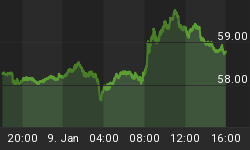Our Blog started to recommend short positions on select stock market sectors starting on Jan 16 through Jan 23, because we believed that a shift was taking place that would reverse existing trends that have been in place since 2011, and possibly even 2009. Our premise finally starting being acknowledged by a few at the beginning of February, although a lot of analysts are still suggesting the bull market will continue after a required period of correction. We beg to differ and we will use the three popular Dow charts - Industrials, Transports and Utilities - to demonstrate our thoughts on this matter.
First, the Dow Jones Industrials in the weekly chart below has developed a large bearish wedge pattern (as have most other market indexes) beginning back in 2009 from where this cyclical bull market began. You will note that the trendline from that 2009 bottom has been broken during the recent decline, as well as a minor horizontal support level at 15,800, that now becomes resistance. More importantly, the underlying momentum in the second panel of the chart failed to confirm the Dec 2013 new high, and it formed a head and shoulders top pattern that has now broken below the red dotted signal neckline. This implies that the Dow Industrials will move down to the next support neckline on the price chart, which current sits around the 14,700 level. After that, I would expect at least 3~4 months of consolidation as we develop a right shoulder of what looks like will be another head and shoulders pattern that takes us even lower.
Next we have the Dow Transportation Index, which also clearly shows the rising bearish wedge pattern since 2009. The price has not broken the major uptrendline since 2009, but it has broken a smaller (dotted blue) trendline beginning in Nov 2012. Currently, it is resting on minor support at the 7000 level that could hold it here for the month of February - beware of the Ides of March? Again, the underlying momentum indicator did not confirm the Jan 2014 new high and it has broken below the dotted red neckline of a head and shoulders pattern. We expect this will take the Transports down to the solid red line that will likely be around 6500 some time in the future when this happens. The Transports is behaving as the strongest of the three indexes discussed.
Finally, the Dow Utilities Index also has the bearish wedge pattern, with the difference here being that the Utilities Index made its final high back in May 2013, and that it has a very clear 5-Elliott Wave pattern completed, whereas the same wave pattern is not so clearly identifiable in the prior two index charts. Another thing readers should be aware of, is a common rule that interest rates (ergo Utilities) often peak prior to the stock market and that the stock market nearly always makes a top within 12 months of that happening; it has now been 7 months to the Dec 31 top.
In this chart we do not, however, have a head and shoulders top pattern, rather it seems to be a triangle consolidation that has formed. During the last 3 days the price created an intraday head-fake by appearing to break up and out of the consolidation, only to fall back and decline. That action should mark the last gasp for the Utilities. The long red dotted trendline looks to be the next important line in the sand, as we have already broken below the long wedge trendline from 2009. The next levels of support lie at 465 and the 445~450 level as indicated by the horizontal red/green line and thick dotted blue line. The underlying momentum has a similar line that matches the troughs in price and you might say a head and shoulders pattern could be implied to exist from the end of 2012 through today.
What is disturbing about this chart is the suggestion that interest rates will start rising and with momentum behind them. Now is not the time to be complacent and believe the rhetoric that "the government will never raise rates", perhaps the market will now determine what the rates will be moving forward.


















